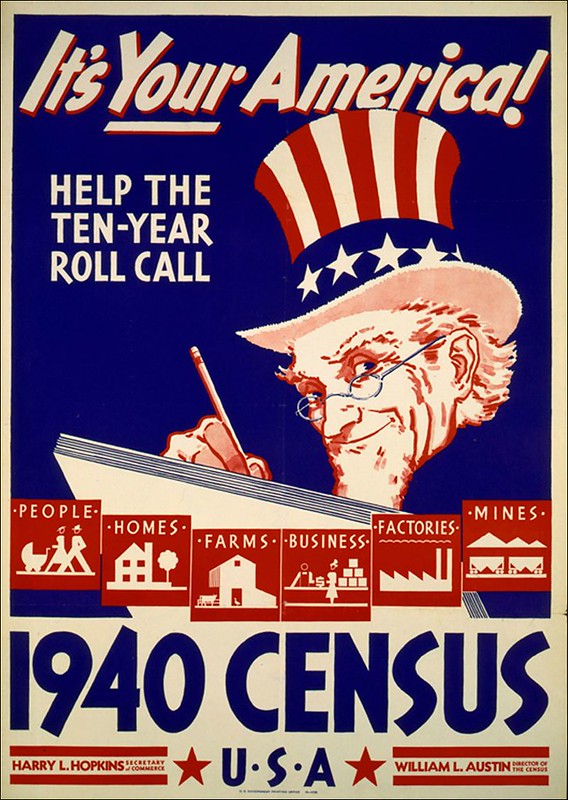
As you've probably heard, the 1940 census was released to the public earlier this week, and the response was so great that the National Archives' web site crashed on Monday.
One of the people trying to access the site that day was Cate Bloomquist, one of the volunteer researchers who've been helping me with PermaRec 2.0. She thinks the newly available data in the 1940 census may be very helpful to Permanent Record, so I asked her to talk a bit about how the census fit into her research:
Censuses are extremely important to genealogical research in general, but particularly to the Permanent Record project, because the census provides us with the names of other family members to trace forward. Since the Manhattan Trade students were female and many of them married, tracing them forward has been difficult. The censuses provide us with branches to trace forward, with the hope of locating a living person off that branch who can lead us back to the branch we're looking for. Censuses also provide valuable information regarding dates/places of birth, immigration dates, naturalization dates, how many years married, how many children died vs. lived, occupation, etc.My piece of advice for people doing census research: Whether you're using the index compiled by Ancestry.com or the more traditional soundex, never trust a "nil" result in the index. People were often incorrectly indexed -- and it's not always the fault of the indexer. Have you ever looked at some of the census handwriting?! So if you don't find your family in a search of the census index, always, always try an alternative way of finding them. It involves a little more work -- you might have to look up a known address manually or perhaps look up a neighbor from a previous census to see if they are still neighbors -- but I would say I am able to locate someone by one of these alternative searches at least 50% of the time, even if they did not show up in the index.
And that's why Cate is such a great researcher (and maybe why I'm such a poor researcher, because I get frustrated easily when I don't find what I'm looking for).
The census is an interesting decennial ritual. Although there's no law requiring a person to respond to the census, the actual taking of the census by the federal government is mandated by Article 1, Section 2 of the U.S. Constitution, which states, "The actual Enumeration shall be made within three Years after the first Meeting of the Congress of the United States, and within every subsequent Term of ten Years, in such Manner as they shall by Law direct." (Do other countries have similar protocols?)
And why is the data from the 1940 census being revealed now? According to a Census Bureau spokeswoman quoted in this article, "In 1952, the director of the Census Bureau and the National Archivist agreed that keeping census records private for 72 years balanced public release of federal records with the tradition of confidentiality." So the 1940 census has come out from under the 72-year umbrella this year, the 1950 census will become available in 2022, and so on -- another decennial ritual. It creates a cyclical rhythm for genealogists and researchers (and, presumably, for Ancestry.com's subscriber patterns).
All of which brings us back to Cate Bloomquist, who turns out to have a very personal reason for being interested in the 1940 census: "I'm looking forward to looking up my dad. He was six years old in 1940, so this is the first census I will be able to see him in. He is currently suffering from Alzheimer's but is mostly sharp enough still that he can appreciate the census, and I look forward to sharing it with him."
I'll get back to report cards soon, but first I'm excited to report that I've just acquired some amazing old documents that have Permanent Record written all over them: a stack of New York City real estate paperwork (mortgages, deeds, etc.) from the 1850s and ’60s! It's amazing stuff. I just need to find time to go through all of it. More details soon.

The NYPL has released a searchable version of the 1940 NYC phonebook to coincide: http://www.wnyc.org/blogs/wnyc-news-blog/2012/apr/02/new-nyplorg-feature-allows-1st-time-access-historical-nyc-telephone-directories/
ReplyDeleteThe federal government in Canada has really scaled back the census, and made it non-mandatory. Needless to say, researchers of all stripes are NOT happy about it.
Boy howdy! They sure could design a poster back in 1940.
ReplyDelete